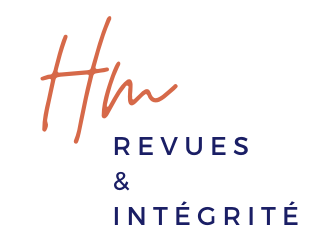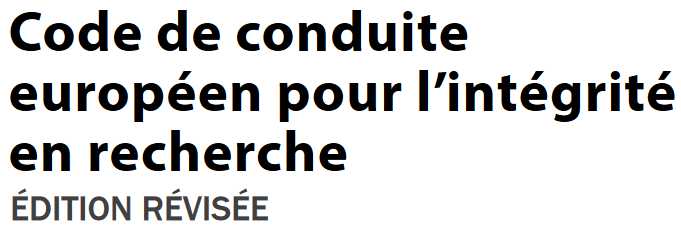En mai 2015, le NEJM a publié 3 articles de 5 pages chacun, et un éditorial sur la politique des liens d'intérêts au sein des revues biomédicales. EXCELLENT.. Le titre de ce billet est mon interpétation du résultat de l'enquête en cours (voir plus bas). Attention, la transparence et autres mesures pour limiter les biais sont utiles. Les biais "anti-industrie" sont nombreux et ont des conséquences néfastes. Le titre de l'éditorial du NEJM annonce un peu leur future politique "Revisiting the commercial — Academic interface'. Depuis Ingelfinger, puis A Relman, les rédacteurs du NEJM ont toujours été leaders dans les prises de position sur les liens d'intérêts des auteurs : les premiers à dénoncer les biais liés à l'industrie, et maintenant les premiers à dire que l'on est allé trop loin.
Ensuite il y a 3 articles :
- Reconnecting the dots — Reinterpreting industry-physician relations
- Understanding bias — The case for careful study
- Beyond moral outrage — Weighing the trade-offs of COI regulation
Difficile de résumer 15 pages du NEJM, avec plus de 30 commentaires, car la lecture m'a pris une heure. Il faudrait faire 3 billets factuels car de bons exemples sont dans ces articles. Je retiens 2 idées :
- dans l'éditorial, J Drazen liste les institutions (Gates foundation, Wellcome Trust, FDA, etc…) qui "encourage greater interactions between academics and industry, to provide tangible value for patients".
- dans le 2ème article, le déséquilibre entre ceux qui ne parlent pas et les lobbies qui s'expriment : "Shaywitz and Stossel,……, are rare voices competing with a loud chorus of shaming".
Plutôt que résumer, je vous suggère de répondre à l'enquête du NEJM : vous avez 3 cas pour lesquels vous êtes le rédacteur qui doit décider s'il prend ou non l'article compte tenu que l'auteur a des liens d'intérêts. Pour avoir accès aux réponses des lecteurs, allez répondre avant le 17 juin 2015 après lecture des 3 cas , reproduits ci-dessous (ils sont bien faits !!) :
READER POLL ON CONFLICT OF INTEREST
|
In light of the Medicine and Society series of articles by Rosenbaum and the accompanying editorial by Drazen, we invite you to put yourself in the role of editor and help us decide about the suitability of three hypothetical potential authors of review articles for the Journal. A summary of the community responses to this informal poll will appear during the summer. We thank you for participating in the discussion. |
|||||
|
Case 1. Jane Doe, M.D., Ph.D., is a world-renowned researcher in the area of disease X, a condition affecting hundreds of thousands people worldwide. There is a good diagnostic test for disease X, but there are no effective treatments. Doe's lab developed the diagnostic test, and her institution held a patent on key technology related to the test. Doe's institution, her laboratory, and Doe herself received annual royalty payments of $15,000 to $20,000 until 2 years ago, when the patent expired. Doe has consulted for four different pharmaceutical companies; over the past 3 years, each company has paid her over $10,000 per year to develop new therapeutic agents for the disease. Although there are promising leads, no drug has progressed beyond phase 1 safety testing in humans. The Journal is considering soliciting a review article on disease X. Since there are no available treatments, the review will focus largely on disease biology, with indications of where treatments could be used. |
|||||
|
Is it appropriate to consider Dr. Doe as an author of this review article? Go to the poll at the top of this page to vote. |
|||||
|
Case 2. John Smith, M.D., is a world-renowned clinical trialist in the area of disease Y, a common condition that affects about 1 of every 3000 people worldwide. Smith was instrumental in the clinical trials of three drugs that can be used to treat disease Y; all three are still patented, and there are no generic drug equivalents. The three treatments are all relatively safe, with good efficacy, low adverse event rates, and acceptable side-effect profiles. All three are also moderately expensive, with monthly retail costs of about $300, but most pharmacy benefit plans cover at least one of the three drugs, with a monthly copayment on the order of $50. |
|||||
|
Smith continues to conduct research to define who would be most likely to benefit from treatment with these agents. His university receives about $500,000 a year from each of the companies to support his research, but according to university rules, none of that money can be used to support Smith's salary or otherwise benefit him personally. The Journal is considering soliciting a review article on disease Y. It would be a clinical review, with the author asked to indicate how he or she would treat people with the condition. |
|||||
|
Is it appropriate to consider Dr. Smith as an author of this review article? Go to the poll at the top of this page to vote. |
|||||
|
Case 3. Sam Green, M.D., is a well-established physician in his community and beyond, by virtue of his activities with a number of patient-advocacy groups. Although Green is a general internist, he is viewed as the local expert in disease Z, which has a point prevalence of about 2%. Through a commercial database, Alpha, Inc., learned that Green is the largest prescriber of the company's drug Q in the region. Drug Q is a new treatment for disease Z that is currently available only as a branded drug. A new research study, in which Green enrolled three patients from his practice, shows that drug Q is more effective than the current generic treatment for the disease, with a similar side-effect profile. The margin of enhanced efficacy is such that one would need to treat 15 patients with drug Q to show an advantage over treatment with the generic drug. The cost of drug Q is $100 per month, as compared with $10 per month for the generic. |
|||||
|
As Journal editor, you receive an inquiry from Green about your interest in a review article on disease Z. He offers to cover its epidemiology, pathobiology, clinical recognition, monitoring, and treatment in 2000 words, with two tables and two figures. In reviewing the form that lists his financial associations, you note that he has received over $10,000 per year for the past 3 years from Alpha, Inc., for talks about drug Q given at various venues. |
|||||
|
Is it appropriate to consider Dr. Green as an author of this review article? Go to the poll at the top of this page to vote. |
|||||



